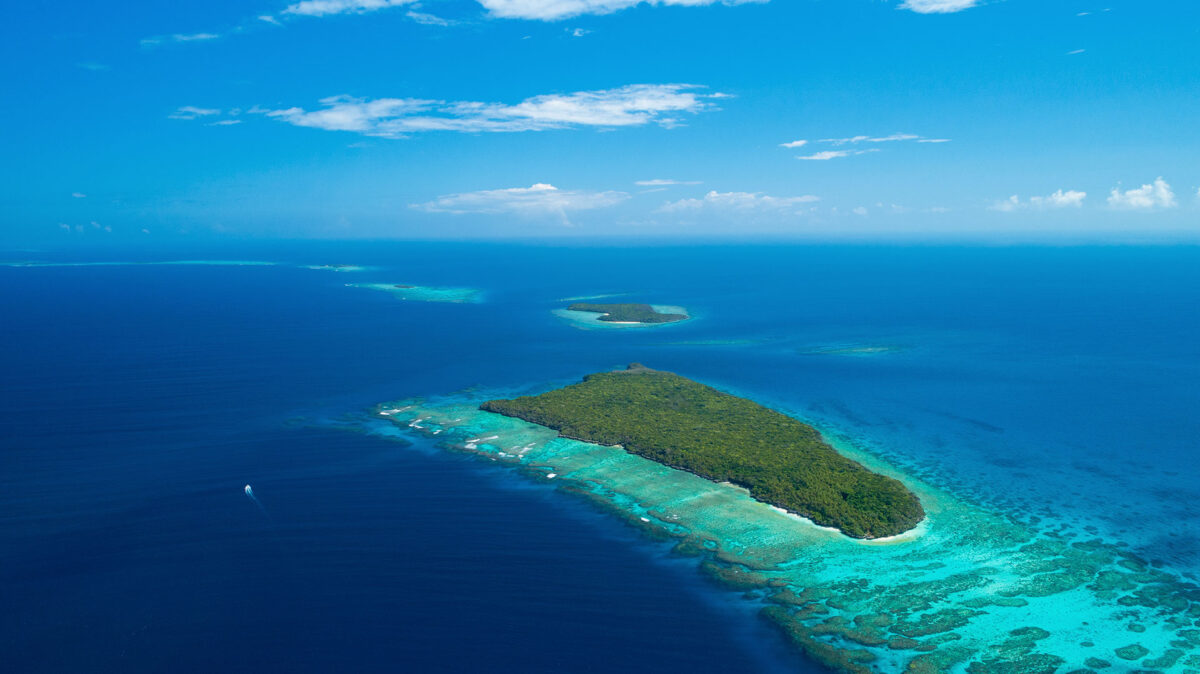At the northerly point of Lifou, Jokin Cliffs, about forty metres high, overlook a remarkably clear sea filled with a mosaic of coral heads, and colours of endless hues from the shore to the open sea, a myriad range of greens and blues. From July to September, the cliffs are an ideal observation post from which to watch for humpback whales. Before continuing their migration to the south of Grande Terre (New Caledonia’s main island), the whales often stop in Jokin where they rub against the coral heads to remove the shells and parasites that have taken up residence on their backs during their long journey. Very close to these same cliffs is the very pretty traditional hut of the sub-chief of Jokin, whose guardians watch over it from each side of its double front door.
On the cliff side, a staircase of 196 steps allows you to go down to the lagoon. Here, the seabed is strikingly beautiful, and you will never cease to admire the aquatic ballet of the inhabitants of the lagoon. A fascinating sight. A visit has every chance of ending with a dip in the crystal-clear waters in the company of the children from the tribal village! The caves in the cliff, which face the vantage point, are called in the Drehu language "Lue qene hnafij" or in English "the two nostrils" because of their shape that resembles a nose, they served as a burial place reserved for the chiefs of the tribe. Still present, their bones are preserved and are nowadays, the essential guardians of this magnificent and magical place.
A historic site, this bay, protected from the prevailing winds and trade winds, was also a shelter for fishermen. In early times, the ancients built traditional rafts called Weng, designed with bark and roots of the banyan tree. The Weng was a speciality of the tribe, as at that time, unlike for the other tribal villages of Lifou, it was the means of navigation best adapted to this beachless site, as a traditional wooden canoe was very difficult to transport.





